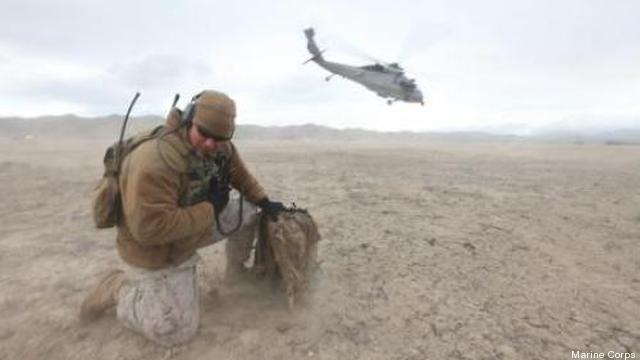MARSOC, Intel Teams Spotlighted In ‘Bold Alligator’
Posted on
 ABOARD THE USS WASP: Ship to shore operations were not the only thing the Navy and Marine Corps looked to sharpen during the biggest amphibious exercise in over a decade.
ABOARD THE USS WASP: Ship to shore operations were not the only thing the Navy and Marine Corps looked to sharpen during the biggest amphibious exercise in over a decade.
Bold Alligator 2012 featured a significant role for special operations, intelligence and civil affairs units, Col. Scott Aiken, chief of staff for the 2nd Marine Expeditionary Brigade, said this week. The exercise replicated a sea-to-shore assault spearheaded by U.S. and coalition forces against enemy troops from a fictional country. This year, American and allied forces from the 2nd MEB and the 2nd Expeditionary Strike Group will push back enemy troops from the country of “Garnet”, who invaded the neighboring country of “Amberland” yesterday.
The special operations element — the first time they’ve been used in a major amphibious exercise like this, according to a senior Marine commander — used during the exercise was a mix of simulated forces and actual boots on the ground, Aiken said. The real-world special operations elements were pulled from units in Marine Corps Special Operations Command and force recon troops from the 24th Marine Expeditionary Unit. Those forces were used for “shaping” operations, or for missions designed to prepare the shoreline and areas inland for the arriving Marine Corps. Those troops also provided intelligence for a planned deep insert air assault against an enemy encampment at Ft. Pickett, VA, Aiken said. That raid will be led by the 24th MEU later this week, Aiken said.
Hejlik stressed the importance of integrating special operations forces into Marine operations during a breakfast in Washington last week. The three-star general said getting those two groups to work closer together was a key goal for Bold Alligator planners. Increasing the ranks within MARSOC is a key part of the Marines post-Afghanistan force structure, especially as the service’s total force drops to 181,000 troops. But current budget pressures may hinder that growth, Hejlik said at the time. The Marines “will not get the plus-up we expected” for their special forces cadre in the upcoming fiscal 2013 defense bill, Hejlik said. He did not go into specifics on how low that potential MARSOC troop increase could go. But the three-star general did note his lowered expectations for the Corps’ special operations force was tied to the service’s pending troop drawdown.
Aside from special operations forces, service planners also inserted Navy and Marine Corps intelligence exploitation and maritime civil affairs teams as part of the exercise. The teams carried out a simulated insertion into Amberland to meet with local leaders prior to the beach assault, Lt. Cmdr George Pastoor, a Dutch naval officer attached to Expeditionary Strike Group 2, explained. Along with coordinating and supporting indigenous forces, the teams also fed key intelligence back to Marine Corps and Navy planners here, Pastoor said. In guidance sent to Bold Alligator planners, U.S. Fleet Forces Command chief Adm. John Harvey directed service strategists to explore possible modifications to maritime intelligence requirements via the exercise.
Subscribe to our newsletter
Promotions, new products and sales. Directly to your inbox.
